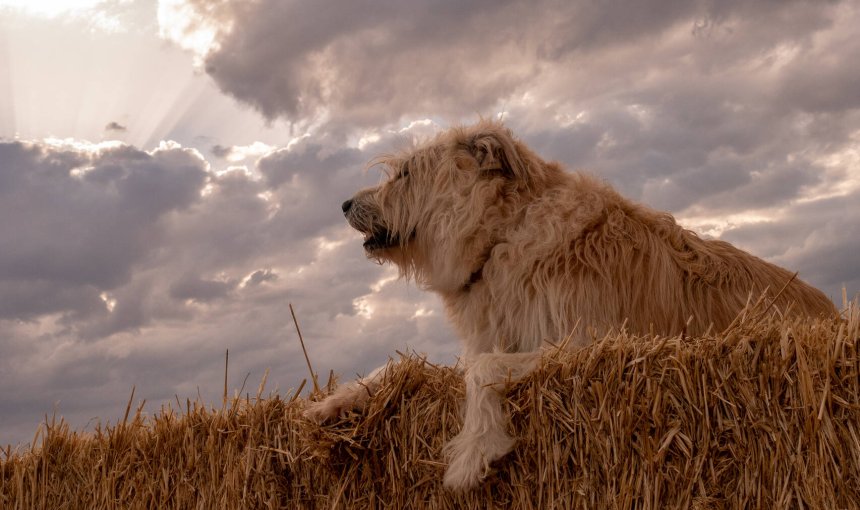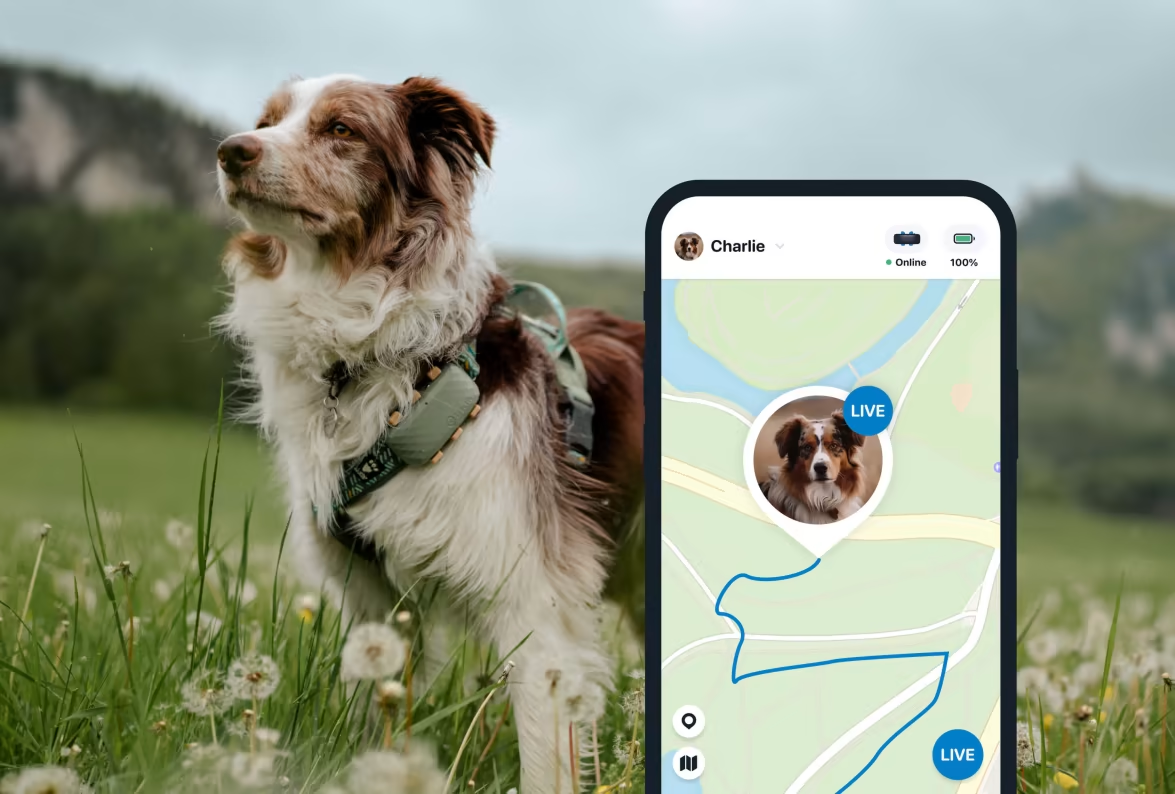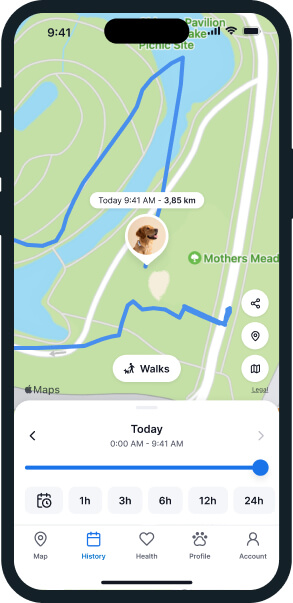Why Are Dogs Scared Of Thunder? And How To Comfort Yours?
Is your dog scared of thunderstorms? They're definitely not the only one. In fact, the fear of storms, lightning, and thunder is one of the most common among dogs in general. But why is this the case - and what can you do about it?

Your good boy or good girl might be a brave little trooper on most days – so you might be wondering why they make a beeline for under your bed or into your arms when it’s raining or thundering outside. In fact, why are dogs scared of thunder in the first place? And how can you help comfort your buddy when the weather’s rubbish outdoors?
Now while the fear of storms and thunder isn’t possible to get rid of 100%, there’s a lot you can do to reduce it – and also prevent your buddy from getting up to any mischief, destructive behavior, or even a runaway attempt because they’ve gotten spooked. Here are 5 steps to get you started.
Key Takeaways
🐶 Your dog’s acute sense of smell and hearing can “alert” them to an approaching storm much in advance. Which can be disorienting and scary to experience.
🫣 In some cases, your dog might have “learned” to be scared of thunder or loud noises in general.
🌩️ You can help calm yours down by providing a safe, quiet, well-lit indoor space, giving your dog some company, and staying in touch with your vet.
🌎 In an emergency – like if your dog’s run away during a storm – a dog GPS tracker can help you track them down in real-time and find them in no time.

Always know your buddy is healthy & safe
Read moreWhy are dogs scared of thunder?
Dogs tend to have a keen sense of hearing, smell, and even ability to sense changes in atmospheric pressure – several times stronger than that of humans. (Yes, even better than your ability to smell the rain.)
Because of this, the loud, booming sounds of thunder, the howl of the wind, and the crash of rain outside can be a frightening, overwhelming experience for your dog – much like fireworks. It’s why some dogs tend to spook at loud noises in general – like honking cars, passing vehicles, sirens, crying children, and even loud music.
In fact, haven’t you felt the same when you got that weird “gut” feeling something wasn’t quite right? It’s one reason you might find your dog yelping and panicking even before the storm arrives. Their senses help them pick up on subtle, easy-to-miss changes in the environment that signal something “scary” is approaching – which they might not be able to 100% understand or why it’s happening.
How your dog might behave if they’re scared of thunder
You might think a “scared” dog would only be barking excessively or whining and clinging to you – but fear in dogs turns up in a whole bunch of ways. Including signs like:
- Panting
- Drooling or salivating more than usual
- An elevated heart rate and rapid breathing
- Loss of appetite
- Hiding
- Cowering, crouching, low body posture
- Shaking, quivering, trembling
- Tucked tail
- Barking, whining, abnormal vocalization (often relentless)
- Destructiveness
Since dogs mature socially between 12-36 months of age, that’s when they learn and mimic behaviors from others around them. This could include “panicking” at loud noises or hiding when it’s raining or thundering outside. So it’s also possible your dog might’ve picked up their “fear” as a learned behavior. Whether that’s from Mama dog, other puppies in their litter, or even other humans they’ve lived before you adopted them.
If you aren’t able to address your dog’s fear of thunder or loud noises, it can worsen into a phobia. Which can turn up as unwanted and destructive behaviors during a storm, like chewing on slippers or even breaking windows. Or escape attempts, even to the point of self-harm, if it means finding somewhere safe.

Follow your dog anywhere
Get real-time location information, wherever they go. And find out when they try to make an escape, or just when they go somewhere they shouldn’t, with Virtual Fences.
How to calm a dog down during a storm
With a bit of planning and prep, you can help set up a safe, soothing indoor environment for your buddy to weather out the storm. Here are some steps to get you started.
1. Provide a safe hiding place indoors
Make sure your dog has a safe place to retreat to at any time during a thunderstorm – ideally indoors. A safe place could be:
- In their own crate
- Under your bed or a table
- Under the covers in your bed or on the couch
- Or even in your arms in a quiet, familiar environment
Make sure that your dog can get into its safe area without your assistance. This will give your pup comfort whether or not you are home.
2. Secure your fencing & backyard
As soon as you see or feel that a storm is coming, bring your dog indoors. (Yes, even your outdoor dog can spook if left in the open when the skies get darker.) Dogs left out doors may panic and try to escape the yard. When dogs panic they may hurt themselves trying to run indoors, jump over (or through) fencing, or out of the garden.
Which is why it makes sense to double-check your fencing for any holes, diggable spots, or low spots that your dog could jump over or dig under. Don’t underestimate how resourceful your dog can get when they’re spooked enough!
3. Don’t leave your dog home alone (or unoccupied)
Dogs tend to be much more scared if left alone during a thunderstorm. So if the weather forecast shows some clouds and lightning coming up, try your best to either stay at home with them – or get a pet sitter, friend, or loved one to keep them company.
While you two are at home together, keep your dog occupied with a fun game of tug-of-war, playing catch, or even learning new tricks. The distraction can help change your buddy’s fearful behavior by sidetracking it with an activity they enjoy.
4. Minimize the noise
Another way of reducing the noise is to mask it by adding other sounds. Like, for example:
- The radio
- Music. Dogs tend to calm down with reggae music, for example!
- Television, including dog TV on YouTube – where you can find 8-10 hour videos designed to keep dogs busy and occupied.
You could also counter-condition your dog’s “scared” reaction. Play the “scary” sound at a very low volume – while keeping them distracted with a toy or a game. With time, this can help your dog associate the sounds of thunder, wind, and rain less with fear. (And more with something positive or neutral instead.)
5. Keep the indoors quiet & well-lit
Dogs tend to spook from fireworks much like they do with thunder and lightning. It’s a scary combination of flashing lights and booming noise that can drive them under a bed or over a fence within seconds.
So if you can block out as much of the noise and light as possible, you can reduce their discomfort and relax easier.
- Keep the curtains drawn and move your dog to a room where you can hear the thunder the least.
- Else, you could turn on the light in the room your dog is in to minimize the impact of the lightning.
6. Stay in touch with your vet
If you’ve set up as best an indoor environment as possible and your dog is still scared of thunder, your vet might be able to help. Drop by your clinic to discuss whether your dog could best benefit from anti-anxiety medication or with the help of a professional animal behavior specialist.
⚠️ Just remember: never give your dog any medication without consulting your veterinarian. Medical products designed for humans may contain ingredients that are toxic to dogs.
Where a GPS Tracker can save your dog’s life
When a thunderstorm rolls in, even the calmest dog can suddenly panic and flee. Unfortunately, this instinct to flee often puts dogs in danger, from getting lost to facing traffic or other hazards. That’s where a dog GPS tracker can be a literal lifesaver.

A Tractive GPS & Health Tracker helps you stay one step ahead, even in the most stressful moments. Whether your dog dashes off in fear during a storm or you’re just trying to keep them safe during everyday outings, having this tool at your side offers both peace of mind and real protection.
Just head to your Tractive mobile app and:
- Track your dog’s every step – in real-time
With LIVE mode updating their location every few seconds. Perfect for tracking a runaway pup during or after a thunderstorm. Besides, unlike the Apple AirTag, your Tractive GPS works over an unlimited range. Plus, it doesn’t need a network of compatible devices to work. - Set up a safe zone
Like around your yard or house. Get instant escape alerts when your dog leaves or re-enters them. - Check where your dog’s been
From their Heat Map and Location History. Handy if you need to understand where they’ve gone after a panic-driven escape or just their favorite hangout spots.

- Track your dog even while on vacation
With its built-in SIM card, your Tractive device works across 175 countries on a Premium subscription. So you’re prepared no matter where the storm strikes. - Find your dog even if it’s dark outdoors
Activate a light or sound on the tracker to help you find your dog in low visibility. - Pre-empt a panic attack before it arises
With built-in Bark Monitoring to alert you to sudden, excessive barking or even signs of anxiety, like restless pacing.
Using a GPS tracker is a proactive step toward ensuring your dog’s safety – not only during thunderstorms but every day. It’s one of the easiest ways to make sure a fear-driven flight doesn’t end in heartbreak. So the next time you’re wondering – why are dogs scared of thunder? – you have the peace of mind knowing you’ll always be able to find yours.
And if you’ve liked this post, share it with a friend or a loved one – and let’s help build a safer, kinder world for our furry friends together.



